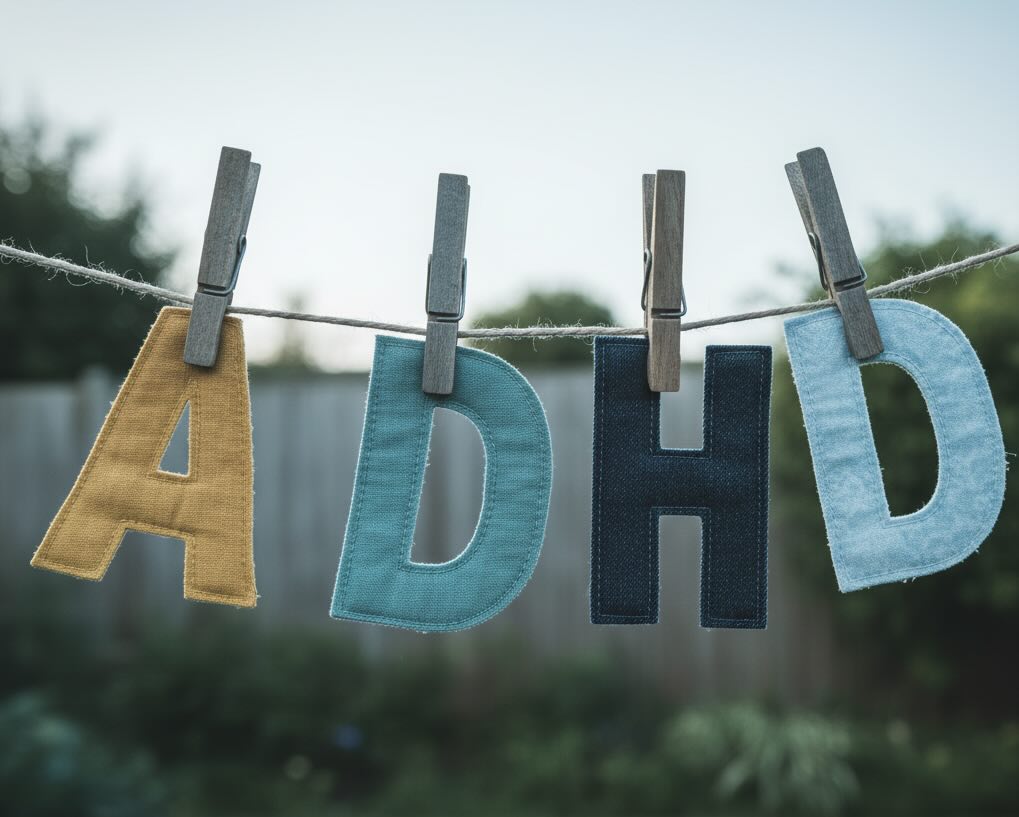What is Cocaine Dependence?
People often use words like “coke addiction” or “crack addict”. Clinically, we use more precise terms:
- Cocaine use disorder (CUD): in the DSM-5-TR, CUD sits with other stimulant-related disorders and describes a problematic pattern of cocaine use causing significant distress or impairment, rated mild, moderate or severe depending on how many criteria are met over a 12 months.
- Cocaine-related disorders: DSM-5-TR also includes diagnoses for cocaine intoxication, withdrawal, and several cocaine-induced mental disorders (such as psychotic, depressive, anxiety and sleep disorders) when symptoms are severe and clearly linked to cocaine.
- ICD-11 disorders due to use of cocaine: the WHO classification includes codes for cocaine dependence (6C45.2) and harmful pattern of use of cocaine (6C45.1), as well as acute intoxication, withdrawal and cocaine-induced mental disorders.
Many people who try cocaine do not go on to develop a dependence, but cocaine has a relatively high potential for addiction, especially with frequent use, high-potency forms (e.g. crack, injected or smoked cocaine) and early onset.
Cocaine Dependence Symptoms
Core features of problematic use
- Loss of control
- You tell yourself you’ll only use it at weekends, then find yourself using it during the week as well.
- You've tried to cut down or stop more than once, but haven't been able to.
- You have strong urges or cravings to use.
- You give up or cut back on activities you used to enjoy because of cocaine.
- Using more than intended or for longer than you planned
- You plan to “just do a couple of lines” but end up binging through the night.
- Moving from occasional lines to regular binges, crack smoking, or injecting.
- Seeking stronger and more frequent “hits” to feel the same effect.
- Time and focus spent on cocaine
- A lot of mental space goes into thinking about using, getting money, or recovering.
- You feel uneasy or restless if you don’t know where your next dose will come from
- You use it in dangerous situations (e.g. driving, unsafe sex, using alone, mixing with other substances).
- Continued use despite harm: You keep using even though you know it is causing:
- Financial problems, debt or legal issues
- Problems meeting work responsibilities, study goals or job loss
- Conflict in your relationships with partners, family or friends
- Worsening anxiety, low mood, paranoia or psychosis
- Chest pain, palpitations or other physical health warnings
- You experience tolerance and withdrawal symptoms when you stop or cut down (see below)
- Over time, needing more or stronger cocaine for the same effect.
- Feeling low, exhausted, anxious or agitated when you don’t use.
Physical and psychological effects of heavy use
Cocaine is a potent stimulant that affects the heart, brain and blood vessels. Heavy or long-term use can cause:
- Rapid heart rate, raised blood pressure, irregular heartbeat
- Chest pain, shortness of breath, and increased risk of heart attack or stroke, even in younger people
- Dilated pupils, sweating, tremor and agitation
- Loss of appetite and weight loss (during use), then increased appetite in withdrawal
- Nosebleeds, sinus problems and damage to nasal tissues (snorting)
- Lung irritation, coughing or chest infections (smoking crack)
- Injection-related risks – vein damage, infections, and (with shared equipment) blood-borne viruses like HIV, hepatitis B and C.
Psychological effects can include:
- Intense euphoria and overconfidence at first
- Anxiety, panic, irritability or agitation
- Suspiciousness or paranoia (“people are watching me”, “someone’s out to get me”)
- Hallucinations (e.g. hearing voices, feeling “bugs” crawling on the skin) in some people
- Impulsivity and risky behaviour (unsafe sex, driving, aggression, gambling, crime)
- Mood swings, feeling high and driven while using, then low, empty or “crashed” afterwards.
Cocaine withdrawal
When you stop or sharply reduce regular cocaine use, withdrawal is mostly psychological, but it can feel very intense. It often unfolds in phases:
- “Crash” phase (first hours–days)
- Extreme tiredness, sleeping a lot or feeling unable to get out of bed
- Low or “flat” mood, irritability, agitation
- Increased appetite
- Strong cravings to use again
- Withdrawal phase (days, 1–2 weeks or more)
- Persistent fatigue, “brain fog” and poor concentration
- Ongoing cravings
- Disturbed sleep, insomnia or sleeping too much, vivid or unpleasant dreams
- Depression, anxiety, restlessness
- Feeling physically “washed out” or achy.
For some people, low mood and craving can linger for weeks or months, which is one reason relapse is common without support. In a subset of people, withdrawal is associated with strong suicidal thoughts – this must be recognised as a medical and psychiatric emergency.
How it can feel day-to-day
People with cocaine dependence often describe:
- Feeling stuck in a cycle of bingeing, crashing, promising to stop, then being pulled back by cravings or stress
- Living with constant secrecy, guilt or shame about their use
- Struggling with memory, focus and follow-through. Not being the person they want to be at work, study or home
- Growing tolerance for high-risk situations they once would have avoided
- Worry that they are “ruining everything” but feeling unable to imagine life without cocaine.
When to seek help
Call emergency services or go to an emergency department immediately if:
- You have chest pain, severe shortness of breath, collapse, seizure-like activity or sudden weakness, especially after recent cocaine use
- You or someone else has intense paranoia, hallucinations, severe agitation or violent behaviour
- There are thoughts of self-harm or suicide, particularly in the crash or withdrawal phase, or you feel you might hurt someone else.
Contact a qualified health professional if:
- You’ve tried to cut down or stop but can’t, and cocaine is clearly affecting your health, work, finances or relationships
- You notice worrying psychological symptoms (panic, paranoia, hearing/seeing things) with or after use
- You’re mixing cocaine with other substances (e.g. alcohol, opioids, benzodiazepines), which increases risks dramatically
- You have heart problems, high blood pressure, epilepsy, pregnancy, or a history of psychosis, bipolar disorder or major depression and are using cocaine.
How Do You Assess Cocaine Dependence?
There’s no single blood test that “proves” cocaine dependence. Assessment is about patterns, consequences and context. Formal diagnosis typically involves a few steps:
- Start with a broad multi-disorder mental health screen: Because cocaine use interacts strongly with mood, anxiety, psychosis risk, ADHD, trauma, sleep and other substances, a multi-condition assessment (like Loffty) can help you:
- See how cocaine use sits alongside current and past depression, bipolar disorder, anxiety, PTSD, psychosis, ADHD and other conditions and the use of other substances like alcohol, benzodiazepines, opioids, cannabis, methamphetamine, etc.
- Disclose impact on work, study, finances, relationships and legal issues
- Create a structured summary to take to your psychologist, psychiatrist or addiction specialist.
This helps avoid both extremes: blaming everything on cocaine, or overlooking the role of cocaine in your mental health.
- Clinical interview: Your mental health specialist will consider whether you meet DSM-5-TR criteria for cocaine use disorder (a type of stimulant use disorder), and whether other cocaine-related diagnoses apply. They will ask more questions about:
- How often you use cocaine, in what amounts, and in what forms (powder, crack, injecting)
- How long you’ve been using, and how patterns have changed over time
- Attempts to cut down or stop, and what happened
- Withdrawal symptoms when you stop
- Spot patterns between your use and symptoms (e.g. paranoia or mood swings after binges; crashes into deep depression)
- Physical health, including heart, blood pressure, seizures, liver, and pregnancy.
- Medical checks: Because cocaine can affect the heart, brain and other organs, when tailoring a plan, your specialist will also look after your safety by:
- Checking vital signs like heart rate, blood pressure, temperature and oxygen levels
- Arranging ECG (heart tracing), blood tests or scans if needed
- Screening for blood-borne infections (if injecting or sharing equipment)
- Assessing for suicide risk and psychosis risk, especially during withdrawal.
How Do You Treat Cocaine Dependence?
The goal is to move from compulsive, harmful cocaine use to a life where you can function, connect and pursue what matters to you, ideally with abstinence from cocaine, and often from other high-risk stimulants too.
Foundations: understanding and planning
Helpful first steps include:
- Knowing your pattern
- How many days per week do you use
- Typical amounts and route (snorting, smoking, injecting)
- When and why you use (stress, socialising, sex, boredom, staying awake)
- Clarifying your goal
- Many people aim for full abstinence, especially with significant health or mental health risks.
- Others start with harm-reduction steps (e.g. less frequent use, no injecting, no using alone) on the way to stopping.
- Identifying triggers and high-risk situations
- Certain people, places, times, emotions or substances (like alcohol) that make cocaine use more likely
A simple use diary for a couple of weeks can help you and your specialist spot patterns and plan change.
Psychological and behavioural treatments
There is strong evidence that psychosocial interventions are central to treating cocaine use disorder.
Research, including a large meta-analysis of 157 clinical trials, shows that:
- Contingency management (CM): structured, time-limited tangible rewards (like vouchers) for staying engaged and providing cocaine-negative drug tests, has the strongest evidence for reducing cocaine use and increasing abstinence.
- Cognitive-behavioural therapy (CBT)
- Understanding links between thoughts, feelings, situations and cocaine use
- Building coping skills for cravings, stress and low mood
- Problem-solving around money, relationships and routines
- Relapse-prevention planning (what to do if you slip, how to respond to triggers)
- Motivational enhancement therapy (MET)/Motivational interviewing: exploring your own reasons for change in a non-judgemental way, strengthening motivation and confidence.
These treatments can be delivered in outpatient services, day programmes, inpatient/residential settings, or increasingly via telehealth, depending on your needs and local services.
Medication
At present, no medication is officially approved specifically for cocaine use disorder in major guidelines, despite many having been trialled. However, specialists may sometimes prescribe medication to:
- Help manage withdrawal-related symptoms (e.g. severe insomnia, agitation, depression) in the short term
- Treat co-occurring conditions (depression, anxiety, ADHD, bipolar disorder, psychosis) with evidence-based medications
- Support harm reduction (for example, opisoid agonist therapy if opioids are also being used).
Medication decisions should always be made with a qualified prescriber, taking into account your full medical and mental health picture.
Special situations
Some situations need particular care and specialist input:
- Adolescents and young adults – the developing brain is especially vulnerable to effects on mood, cognition and psychosis risk.
- Cardiovascular disease – existing heart disease, hypertension, or stroke history greatly increases the danger of cocaine; urgent medical advice is essential.
- Psychosis or bipolar disorder – cocaine can trigger or worsen psychotic and manic episodes; most guidelines recommend complete avoidance.
- Pregnancy and breastfeeding – cocaine can harm the developing baby and is generally strongly advised against during pregnancy and breastfeeding.
- Polysubstance use – mixing cocaine with alcohol, opioids, benzodiazepines or other stimulants substantially raises overdose and accident risk; treatment plans need to address all substances involved.
Cocaine Dependence Research
How common is cocaine use disorder?
Recent global data show that:
- Cocaine use is rising worldwide, with the UN reporting a record 25 million cocaine users in 2023, up from 17 million a decade earlier.
- Drug use disorders as a whole remain a major contributor to global disability and premature death, with opioid and cocaine use disorders making up a large portion of the overall burden.
- Cocaine use and dependence are most common in young to middle-aged adults, and rates are typically higher in men than women, though women often face greater stigma and barriers to treatment.
Health and social impact
Cocaine dependence is associated with:
- Increased risk of heart attack, stroke and sudden death
- Higher rates of injuries, violence and accidents
- Cognitive problems, mood disorders, anxiety and psychosis
- Infections associated with unsafe injecting practices
- Financial, legal and relationship difficulties
Despite this, many people with cocaine use disorder do not receive treatment, highlighting the importance of accessible, stigma-free services.
Treatment evidence
- Meta-analyses show that contingency management consistently stands out as the most effective approach for reducing objective markers of cocaine use (e.g. negative urine tests).
- CBT, motivational approaches and combined psychosocial treatments show small to moderate effects, and are useful elements of comprehensive programmes.
- Trials of pharmacotherapy (e.g. antidepressants, stimulants, anticonvulsants, disulfiram, and others) have not yet identified a consistently effective medication, reinforcing that psychosocial treatments are central.
Overall, the research supports a hopeful message: with structured, evidence-based support, many people significantly reduce or stop their cocaine use and rebuild health and functioning.
Books and Resources on Cocaine Dependence
- Clinical and educational texts. Chapters on cocaine use disorder in major addiction medicine and psychiatry handbooks (e.g. Substance Use Disorders: A Comprehensive Textbook) summarise current evidence on assessment and treatment.
- Guides and self-help style resources. Many national health services and universities publish free or low-cost CBT-based workbooks for stimulant or cocaine use, covering understanding cravings, planning change and relapse prevention.




